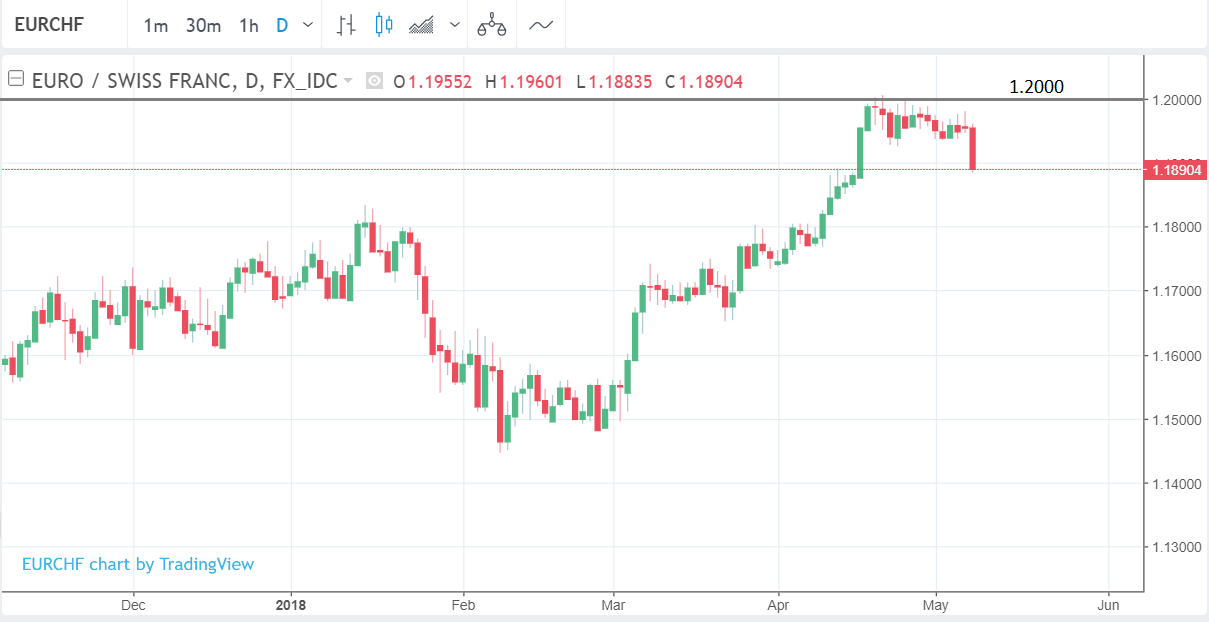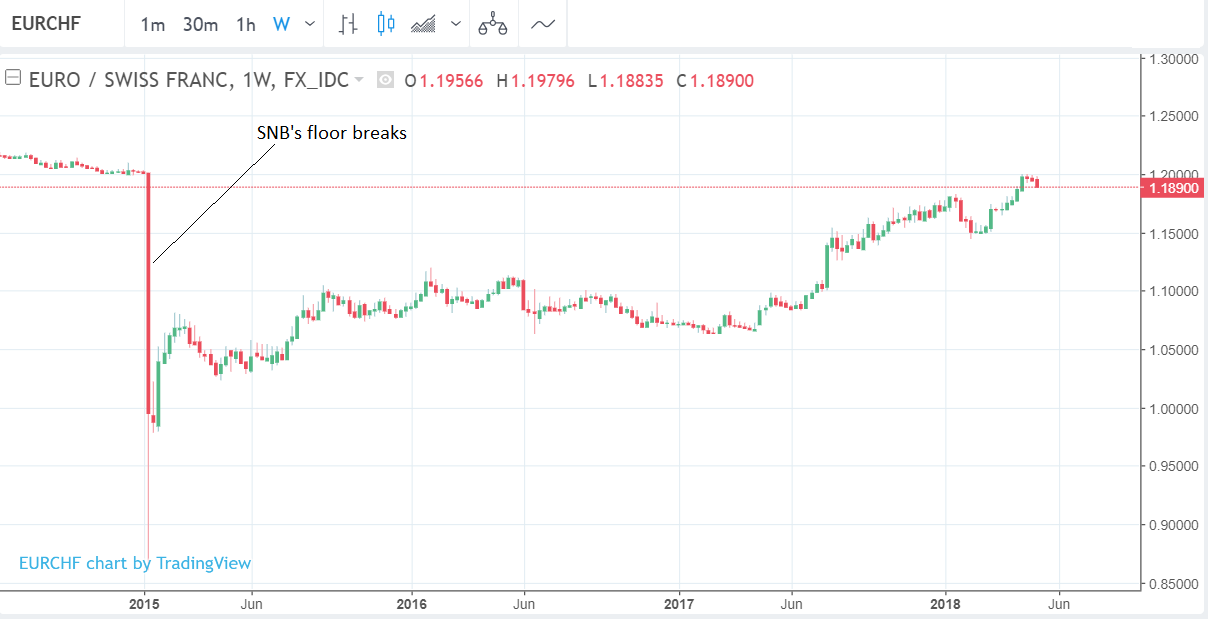EUR/CHF Falls After Meeting 1.20 But Analysts Are Still Bullish Longer-Term
- EUR/CHF is losing ground after peaking at 1.20 but analysts at Julius Baer expect it to recover
- Switzerland's extraordinarily low interest rates are a handicap for the currency
- A recent rise in risk aversion has helped the currency recover temporarily

© Kasto, Adobe Images
The Euro-Franc exchange rate is already down over half a percent on the day and well below the magic 1.20 level with one Euro currently only buying 1.1893 Francs on the interbank markets at the time of writing.
A combination of a broadly weaker Euro - the symptom of slowing German growth - and strong Swiss labour market data were predominantly thought responsible for the move.
Swiss unemployment fell to 2.5% from 2.7% in April.
The pair's fall has come as a surprise to some traders who expected the exchange rate to rise above the historic 1.20 level, although it is too early to say whether the longer-term uptrend has ended, and the pair may well resume its rally given time.
"Little speaks against a further weakening of the Swiss franc, even beyond the threshold of 1.20," says Alain Dettling, an analyst at investment bank Julius Baer. "According to our currency strategists, exchange rates towards EUR/CHF 1.30 would be possible, which is closer to fair value."
The Franc has weakened as a result of the Swiss National Bank's (SNB's) negative interest rate regime, which has meant official interest rates have been cut to -0.75%.
Lower interest rates generally depreciate a currency because foreign capital tends to flow to where interest rates are higher, not lower and this increases demand for currencies where interest rates are higher.
"The SNB’s negative interest rate regime has proven to be the most effective instrument to weaken the CHF. We believe that the SNB will only very cautiously initiate its policy normalisation, as they have signaled their satisfaction with the recent development of the franc exchange rate," says Dettling.
The SNB has been waging a war against the Franc on and off ever since the financial crisis. It has even intervened directly in foreign exchange markets to sell its Franc reserves in an effort to keep the local unit cheap.
Switzerland is predominantly export-based economy so weaker Franc is beneficial to its exporters because it makes their products more price competitive.
The 1.20 level was the scene of many a historic 'currency battle' as it was the defensive line the SNB defended as a 'floor' under which it would not allow EUR/CHF to fall, no matter what.
Expectations of massive monetary policy stimulus in January 2015, however, broke the SNB's defense and saw the rate collapse to a low of 0.86 within only hours, causing many FX brokers to go out of business as no-one had ever believed the 1.20 floor would give way.
Since the break lower, however, the market has steadily climbed back up until ti once again retouched 1.20 last week.
It was expected to continue based on the difference between Swiss interest rates which are some of the lowest in the world and interest rates elsewhere, including the Eurozone where they are slightly higher at 0.0% and expected to gain due to the region's strong recovery trajectory.
"The longer the significant negative interest rate differential relative to the eurozone lasts, the more probable it is for the CHF to stay near the current levels or to weaken further," concludes Dettling.
As a result of their assessment Julius Baer has revised its three-month EUR/CHF outlook to 1.20 from a previous 1.18, and its 12-month outlook to 1.22 from a previous 1.20.
The only possible spoiler to the Julius Baer outlook if Eurozone growth which has stuttered severely in Q1 and is expected by some analysts to continue falling.
With signs global growth may also be faltering, the outlook for CHF may improve as it benefits from safe-haven demand, of which, along with the Yen and Gold it is a primary beneficiary.
Get up to 5% more foreign exchange by using a specialist provider to get closer to the real market rate and avoid the gaping spreads charged by your bank when providing currency. Learn more here.








